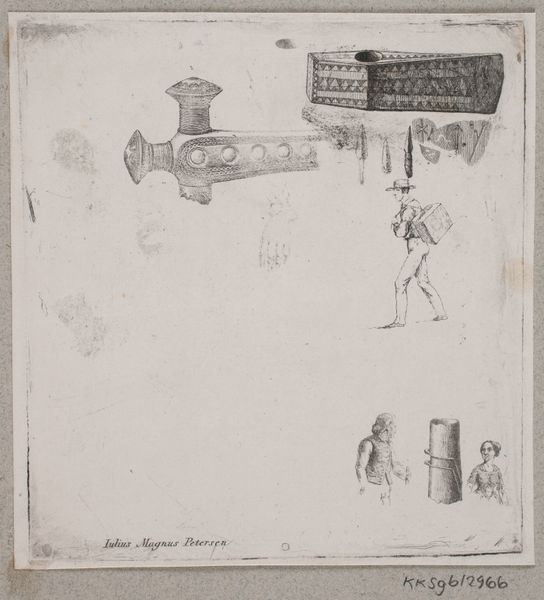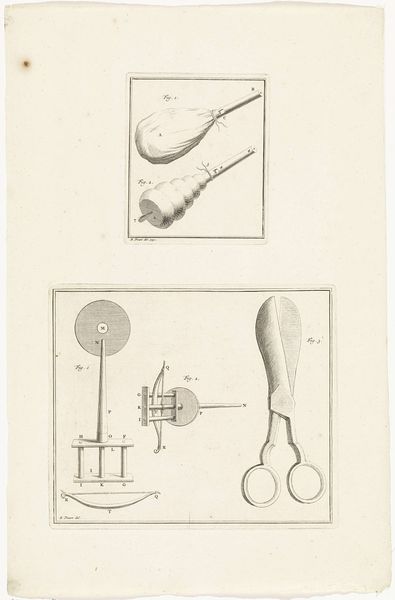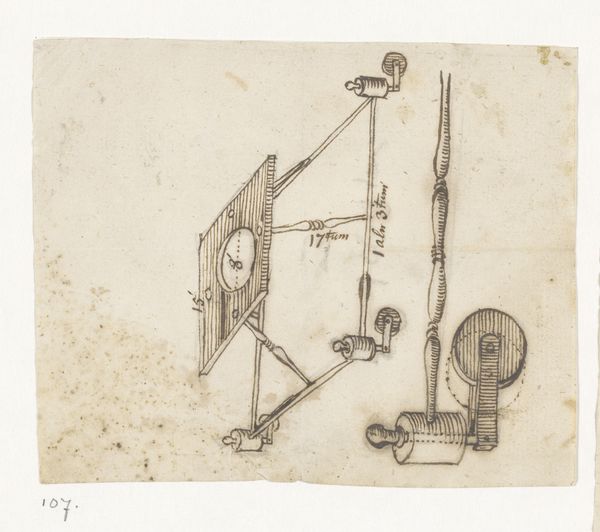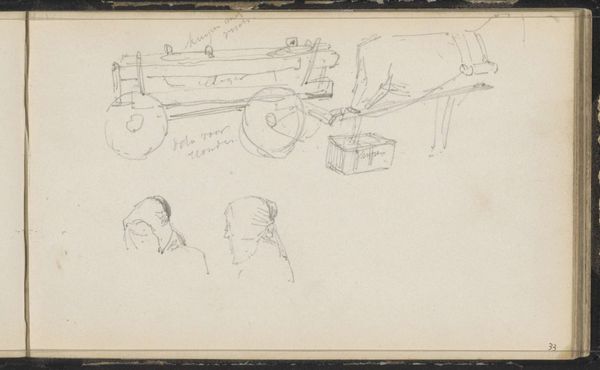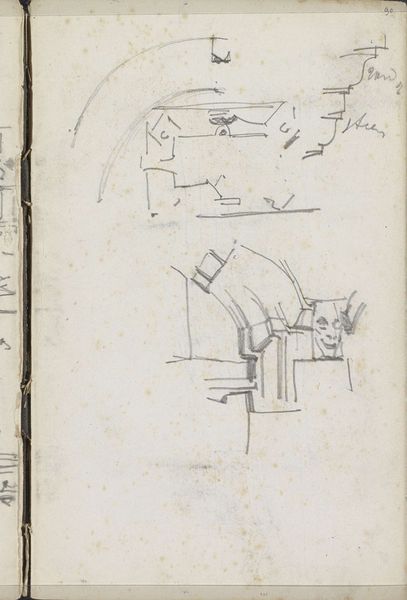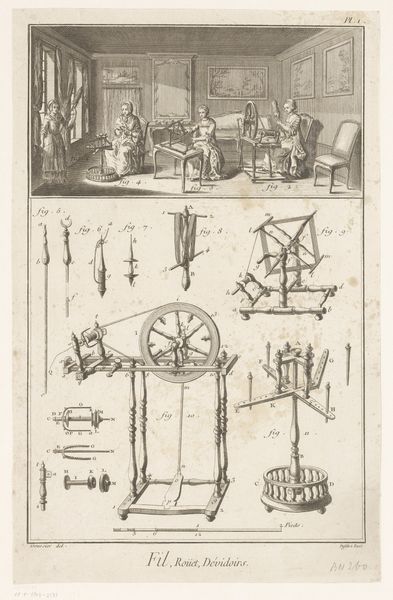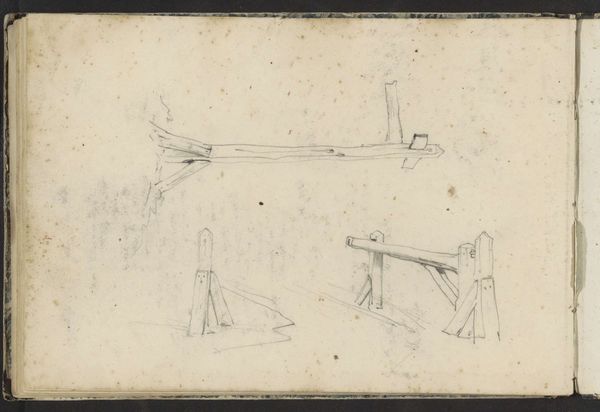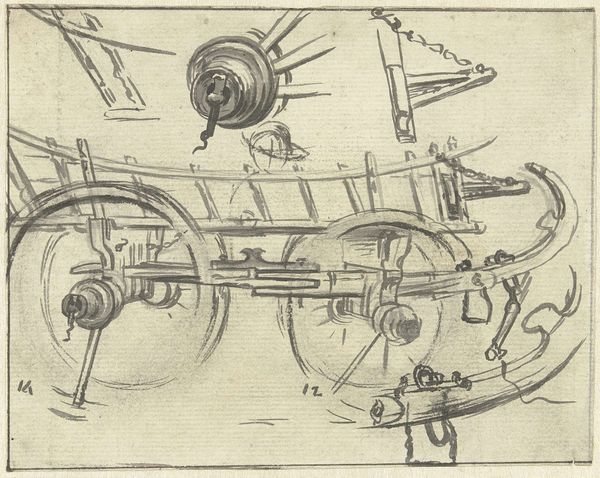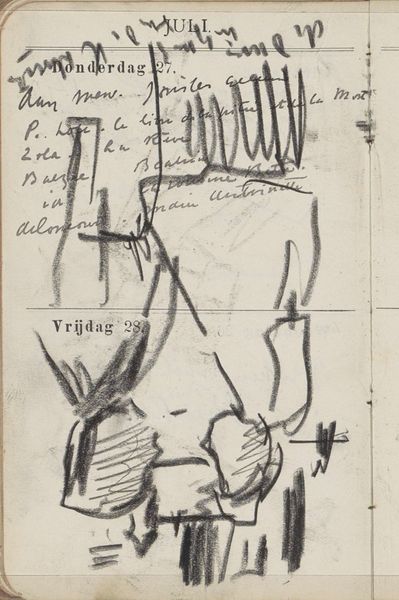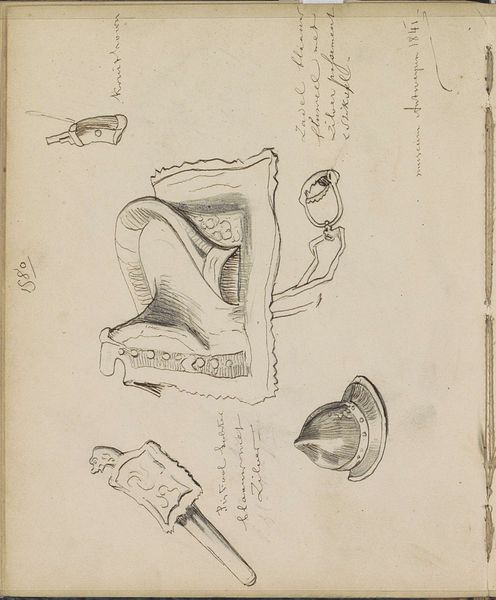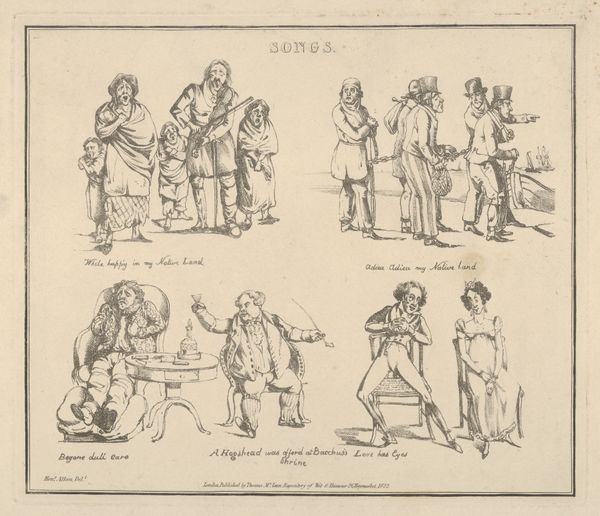
Studies naar antiek en bijbels kostuum 1780 - 1849
0:00
0:00
drawing, paper, ink, pen
#
portrait
#
drawing
#
comic strip sketch
#
pen sketch
#
figuration
#
paper
#
form
#
personal sketchbook
#
ink
#
sketchwork
#
ink drawing experimentation
#
pen-ink sketch
#
line
#
pen work
#
sketchbook drawing
#
pen
#
history-painting
#
storyboard and sketchbook work
#
academic-art
#
sketchbook art
#
realism
Dimensions: height 120 mm, width 180 mm
Copyright: Rijks Museum: Open Domain
Editor: We’re looking at “Studies naar antiek en bijbels kostuum,” a pen and ink drawing on paper by David-Pierre Giottino Humbert de Superville, dating from around 1780 to 1849. It’s full of quick sketches of figures and objects labeled with various terms… it almost feels like a page ripped from the artist’s notebook. What strikes you most when you look at this drawing? Curator: My eye is immediately drawn to the symbolic weight of these figures and objects. The artist isn't simply documenting costumes; he's cataloging signifiers. Notice how the helmets and thrones are carefully labeled: "Phrygian," "Egyptian," "Roman." What do these symbols evoke for you? Editor: I see, it's like each element is chosen to represent an entire culture or historical period. It makes you think about how clothes and objects can act as emblems. So what exactly did these images mean, in their time? Curator: Well, consider the period: late 18th to mid-19th century. There's a strong interest in classicism, a yearning to connect with the perceived virtues of ancient civilizations. The artist is clearly studying and dissecting these visual languages. Notice how different helmets are given similar importance to furniture such as Thrones - items representing rulers. The "Egyptian throne," resting upon “wit obelisk,” evokes the opulence of this powerful empire and is rooted in Ancient memories. What kind of message can it project, alongside more familiar European historical depictions? Editor: So by putting these symbols side-by-side, he’s maybe inviting viewers to consider their relationship, their similarities, or differences in power? It’s all about image recognition, right? Curator: Precisely! Visual shorthand is powerful, and understanding those references unlocks layers of meaning. Artists acted almost as Iconographers themselves, drawing from past symbolic understanding, as well as generating new visual codes to become popular through Art itself. Editor: I never thought about a simple sketch having such a layered narrative. Thanks for pointing out all the interesting elements in it. Curator: A pleasure. It reminds us that even seemingly simple drawings can be rich with cultural and historical meaning.
Comments
No comments
Be the first to comment and join the conversation on the ultimate creative platform.



